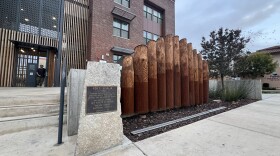Before the Transcontinental railroad, getting the mail from the east coast to California took a long time. That changed in 1857. That's when John Butterfield of won a $600,000 a year contract to operate a revolutionary new overland mail line. Butterfield's company took a route right through the San Joaquin Valley. Today on KVPR’s Central Valley Roots – the Butterfield Overland Mail.
The company’s stagecoaches took a southerly route avoid the snowy Rockies and Sierra. They had around 200 stations covering 2,800 miles. Butterfield’s passengers, freight, mail would travel from Memphis and St. Louis, though Texas and the southwest, before hitting Los Angeles. From there the line went north through the Central Valley and on to San Francisco. It took a full 25 days to make the journey from start to finish.
Locally, the route crossed the Tejon Pass, and descended into the Central Valley to cross the Kern River at Gordon’s Ferry. It continued on to Poso Creek, and eventually to the Tule River, site of present-day Porterville.
A portion of today’s Highway 65 follows the old stage route, which also had a stop near Lindsay, before heading to Visalia. From there the route tracked along present-day Highway 99 from Goshen to Traver, before heading off to cross the Kings River, and eventually on to Firebaugh, and the Pacheco Pass.
Butterfield’s Overland Mail only lasted three years. It was cut short by the Civil War, new technology like the telegraph, and by other more direct routes from east to west. In 2023, Congress designated the former Butterfield Overland Mail route as a National Historic Trail.
CORRECTION: An earlier version of this story indicated the route went from Goshen to Tipton. It has been corrected to indicate the route actually went from Goshen to Traver.






